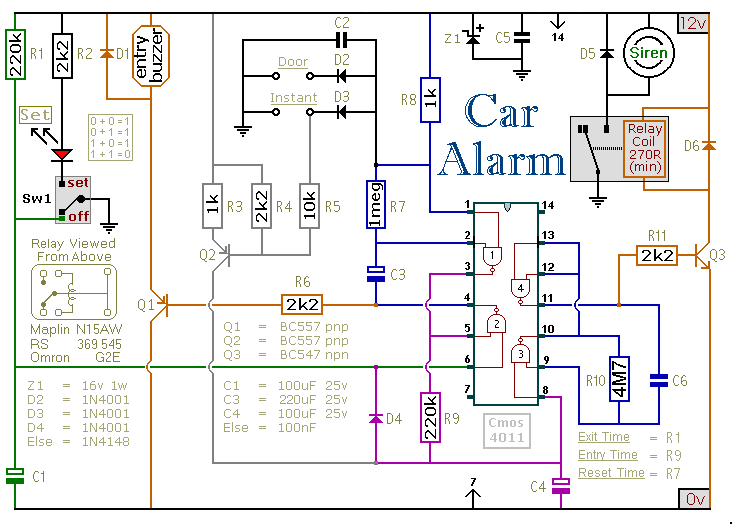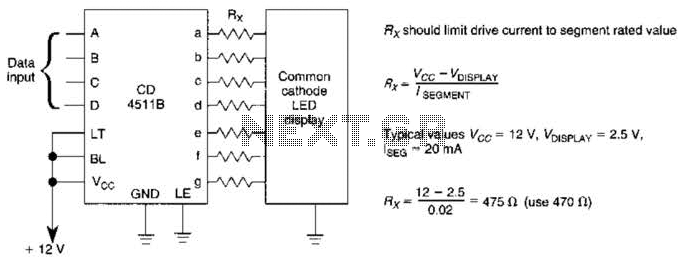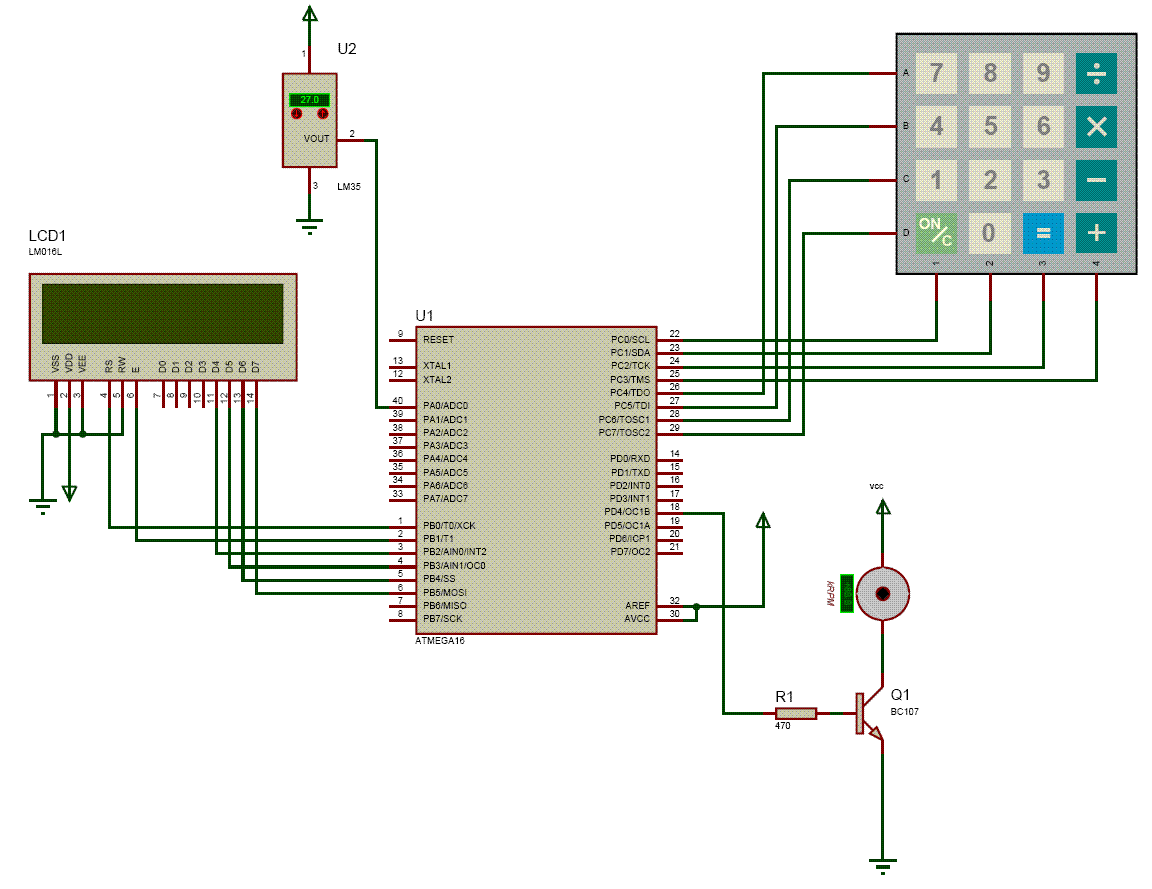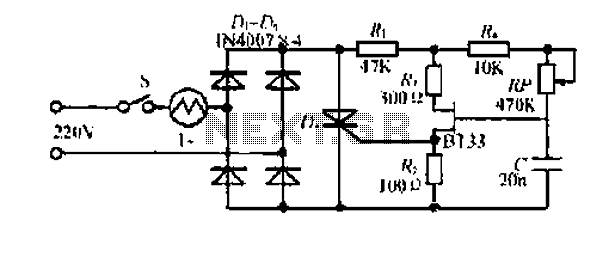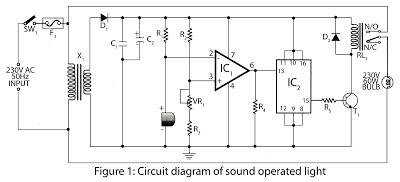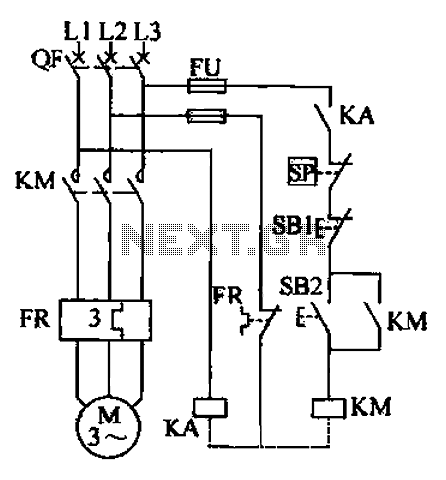
Circuit 22W Stereo Amplifier Using TDA1554
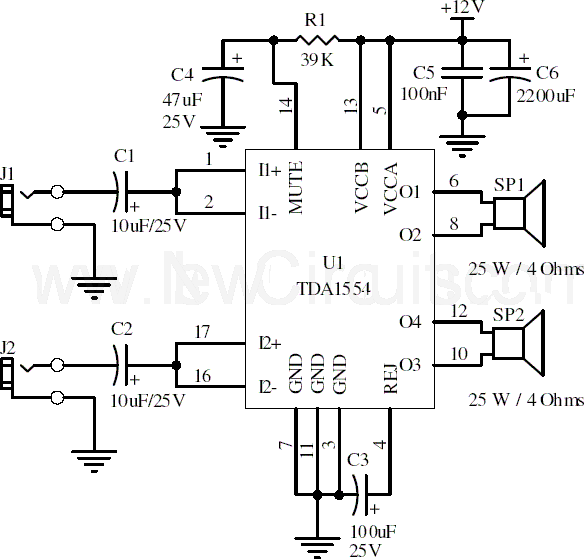
This document presents a 22-watt stereo audio power amplifier circuit diagram utilizing the TDA1554 integrated circuit from NXP Semiconductors (formerly known as PHILIPS Semiconductors). The circuit is designed to amplify stereo signals effectively. It dissipates approximately 28 watts of heat, necessitating the use of an adequate heatsink. When properly installed with a heatsink, the chip remains cool enough to touch. The circuit operates at 12 volts and draws around 5 amps at full volume, with lower volumes resulting in reduced current consumption and less heat generation. Resistor R1 is specified as a 5% tolerance resistor.
The 22-watt stereo audio power amplifier circuit based on the TDA1554 is an efficient solution for audio amplification in various applications, including home audio systems and portable speakers. The TDA1554 is a dual power amplifier capable of delivering high-quality audio output while maintaining thermal stability.
The circuit configuration includes essential components such as capacitors for filtering, resistors for setting gain and stability, and the TDA1554 IC itself. The power supply is a critical aspect, requiring a stable 12V source that can provide sufficient current, particularly at peak audio levels. The use of a heatsink is crucial to manage the thermal output of the amplifier, as the device can generate significant heat during operation.
In addition to R1, other passive components in the circuit play vital roles in ensuring optimal performance. Capacitors are typically employed in the power supply section to smooth out voltage fluctuations, while coupling capacitors may be used at the input and output stages to block DC offsets and allow only AC audio signals to pass.
The layout of the circuit should be designed to minimize noise and interference, with careful attention paid to the placement of components and the routing of traces. Grounding practices are also important to ensure that the amplifier operates without hum or buzz, which can degrade audio quality.
Overall, this amplifier circuit represents a straightforward yet effective approach to stereo audio amplification, leveraging the capabilities of the TDA1554 to deliver robust performance in a compact form factor.Here is the 22 watt stereo audio power amplifier circuit diagram based on TDA1554 and integrated circuit from NXP semiconductors (formerly PHILIPS semiconductors). It is very simple and useful circuit for amplify the stereo signals. The circuit dissipates roughly 28 watts of heat, so a good heatsink is necessary. The chip should run cool enough to touch with the proper heatsink installed. the circuit operates at 12 Volts at about 5 Amps at full volume. Lower volumes use less current, and therefore produce less heat. R1 is also a 5% resistor. 🔗 External reference
The 22-watt stereo audio power amplifier circuit based on the TDA1554 is an efficient solution for audio amplification in various applications, including home audio systems and portable speakers. The TDA1554 is a dual power amplifier capable of delivering high-quality audio output while maintaining thermal stability.
The circuit configuration includes essential components such as capacitors for filtering, resistors for setting gain and stability, and the TDA1554 IC itself. The power supply is a critical aspect, requiring a stable 12V source that can provide sufficient current, particularly at peak audio levels. The use of a heatsink is crucial to manage the thermal output of the amplifier, as the device can generate significant heat during operation.
In addition to R1, other passive components in the circuit play vital roles in ensuring optimal performance. Capacitors are typically employed in the power supply section to smooth out voltage fluctuations, while coupling capacitors may be used at the input and output stages to block DC offsets and allow only AC audio signals to pass.
The layout of the circuit should be designed to minimize noise and interference, with careful attention paid to the placement of components and the routing of traces. Grounding practices are also important to ensure that the amplifier operates without hum or buzz, which can degrade audio quality.
Overall, this amplifier circuit represents a straightforward yet effective approach to stereo audio amplification, leveraging the capabilities of the TDA1554 to deliver robust performance in a compact form factor.Here is the 22 watt stereo audio power amplifier circuit diagram based on TDA1554 and integrated circuit from NXP semiconductors (formerly PHILIPS semiconductors). It is very simple and useful circuit for amplify the stereo signals. The circuit dissipates roughly 28 watts of heat, so a good heatsink is necessary. The chip should run cool enough to touch with the proper heatsink installed. the circuit operates at 12 Volts at about 5 Amps at full volume. Lower volumes use less current, and therefore produce less heat. R1 is also a 5% resistor. 🔗 External reference
